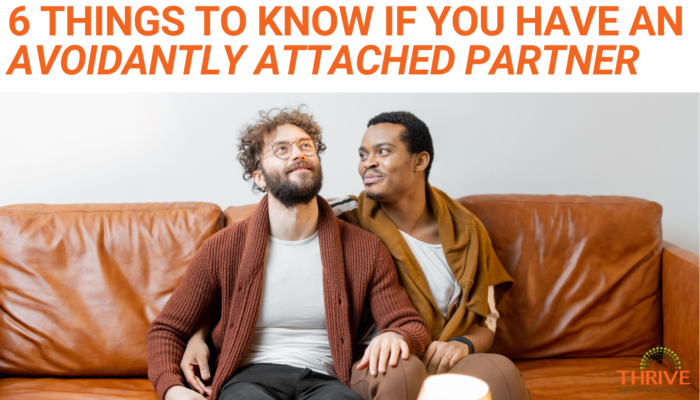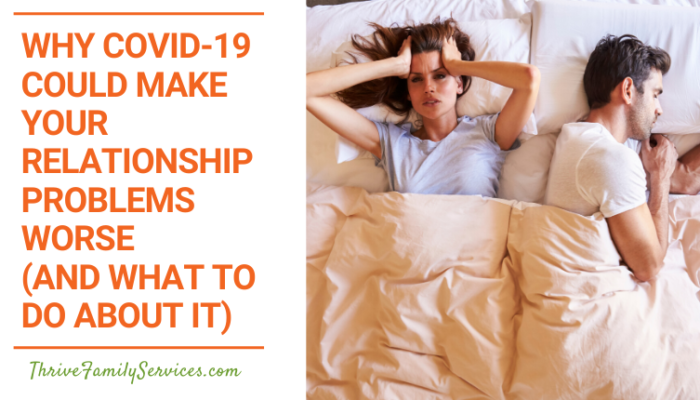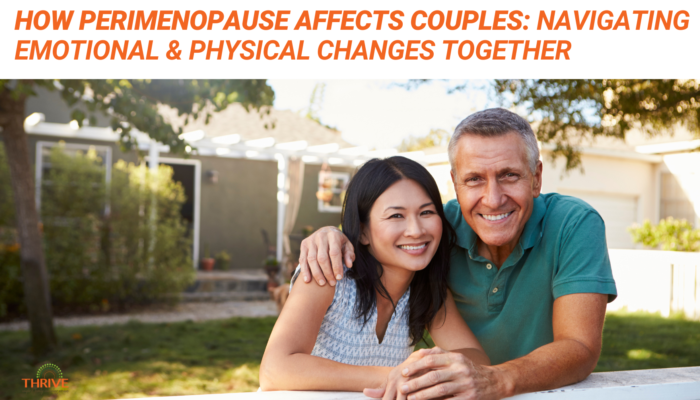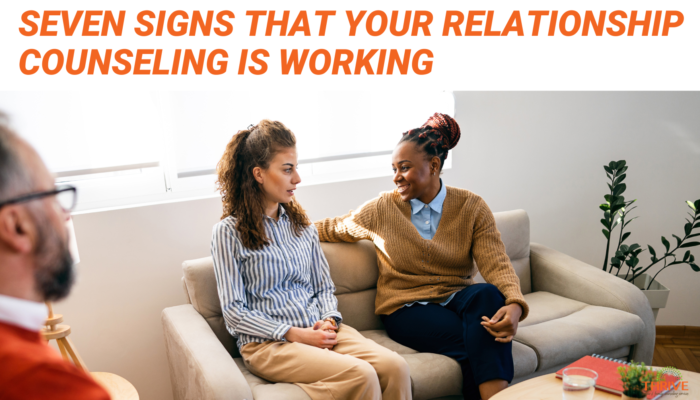Many people are learning about attachment styles nowadays, and that’s a beautiful thing. It can be really empowering and helpful to understanding how your and your partner’s attachment style may affect their relationship and how you can best support each other. Beyond that, learning more about your attachment style may help you find explanations or insight into past relationships or why you react to certain things the way you do.
An important piece of attachment styles is to know they are just that – they are styles or even tendencies of the way you respond.
Also, an attachment style isn’t a fixed thing that has always been the same or will be the same in every relationship. For all of us, when we feel more secure, we tend to respond more flexibly, and that security and flexibility is actually something we can cultivate and practice. Any of us has the possibility to work with our attachment style and grow our capacity to respond differently.
In other words, knowing your attachment style or that of your partner is not a death sentence. In fact, it’s far from it because knowledge is power and we can all change the way we respond to ourselves and our partners.
Lastly, putting a name to different attachment styles is meant to help us understand better, not a way to make people feel bad about themselves or for people to have a way to blame their partners. In fact, in humanistic types of therapy like Emotionally Focused Therapy, we believe in the intrinsic goodness of people, and that all experiences and coping strategies can be made sense of.
A good motivation to change an attachment strategy could be that while it may have made sense in an earlier context in your life, it may not be helping you have the kind of relationship you want now.
What is my attachment style?
Your attachment style is the way you try to maintain relationship security and connection. We’ve covered this previously on the blog, but there are 4 different attachment styles – Secure, Anxious, Avoidant, and Disorganized.
A Secure Attachment is the most common type of attachment style. People with a secure attachment style “don’t get shut down or riled up in the face of emotional threats in relationships. They securely attach and successfully form bonds with other people.
Securely-attached people still do experience insecurity and doubt. The way they react to their emotions and the emotions of others is what makes them secure.”
The other attachment styles – Anxious, Avoidant, and Disorganized, are known as Insecure Attachment. These attachment styles develop from the way our caregivers met our needs (or not) as babies, so we grow up learning on our own how to cope with not getting our needs met. That set of fears and the coping strategies we developed in response form our attachment styles.
Here’s a secret about attachment styles
All insecurely attached people feel anxiety about their relationships. Even avoidantly attached folks, though popular culture says that avoidants don’t.
There are different ways this anxiety manifests for each attachment style that make them distinctive, and that’s what can cause miscommunication and distress in relationships.
Because of this, one of the commonly misunderstood attachment styles is avoidant attachment. If you’re in a relationship with an avoidantly attached person, you may be wondering how you can better understand your partner and their behaviors.
6 things you can do to better understand your avoidantly attached partner
Understand where avoidant attachment style behavior comes from
The behavior patterns that avoidantly attached people often enact come from a place of deep emotional sensitivity. There’s a myth that avoidantly attached people have no emotions at all, since they prefer to regulate their emotions internally, and often appear to be distancing themselves from their partners when things get tough. This could not be further from the truth.
Outwardly expressing emotions feels unsafe for avoidants – we learned it led to abandonment or even punishment.
Imagine you act this way and you don’t know why. You just know that growing up you could only count on yourself to be your emotional and physical support system. The adults in your life were either unable or unwilling to support you in the way you needed (and all humans need!) and so you learned the best way to get your needs met was to meet them yourself. You can’t get hurt if you don’t give anyone an opportunity to let you down, right?
What does each partner think they’re communicating to the other? Avoidants might think that silence shows their partner they’re overwhelmed, but their partner doesn’t understand that unspoken thought. An avoidant person may also be silent because they deeply fear making things worse. In this way, we also call an avoidant attachment style a protective strategy.
The avoidant person might have a conscious or even unconscious thought like:
“It usually gets worse when I try to explain what I’m feeling. We could get in a bigger argument, and ultimately, I could lose them. I’d better not talk about it, and better yet, I’m going to try not to feel it. What’s the point? I’ll go focus on being productive or doing something I enjoy.”
How can you learn to notice distress in your avoidantly attached partner so you can intervene when miscommunication begins?
Explore and empathize with their relationship fears
Everyone has fears about being in relationships. Relationships are vulnerable, and have the potential to hurt us deeply, which can be scary. There are different aspects of relationships that might be more frightening to each attachment style.
For example, avoidantly attached people fear losing their sense of autonomy in relationships or becoming so enmeshed with their partner that they don’t feel like an individual anymore.
Relationships can sometimes feel stifling for avoidantly attached folks because of the way they learned to rely only on themselves as children, when their caregivers weren’t reliable.
Another core fear of avoidantly attached people is being out of control emotionally. This comes from a very real place. Avoidants learned early in life that other people can’t provide safety – only they can. As youngsters, they found that they couldn’t express their true needs and feelings, or their parents would leave (or not be there to help).
As adults, this can lead to a deep fear that if someone sees “the real you” they’ll leave. For this reason, it can feel safer for avoidantly attached people to leave the relationship first, rather than be left and be alone once again.
Discover how avoidantly attached partners express and process emotions
Contrary to myth, people with an avoidant attachment style are often highly emotional. They are stereotypically seen as closed off or cold because they prefer to do their emotional processing internally. Avoidants process emotions just as much as others, they just do it by themselves.
This can seem really frustrating – after all, if you can’t read their mind, you probably don’t know that they are feeling all of these emotions because they don’t show them externally.
People with other attachment styles might prefer to express their feelings outwardly, or to process out loud with other people. We can sometimes add on top of a person’s attachment style many cultural messages about emotions and gender identity as well, which can exacerbate attachment strategies.
Just because the way someone processes emotions is different from yours doesn’t make it wrong, though. It just means that you can recognize when that frustration comes up that you’re approaching emotions in your own ways that make each of you feel safe.
It’s easier to feel compassion for your partner when you remember that they’re really looking for safety.
It might be tempting to push feelings away for some people with avoidant attachment. Emotions can be painful, and feeling out of control emotionally is a core fear for avoidants. It’s important not to ignore emotions for too long, though.
If you don’t deal with the emotions you’ve been shoving down, they’ll eventually choose a time for you to deal with them. It’s like when you don’t take a break from work for a while and you get a nasty cold right when you have the biggest deadline. Avoid the dam bursting by dealing with emotions as they come up, instead of pushing them away to deal with at a later time.
Learn what helps avoidantly attached people regulate emotions
How do you like to calm yourself down when you’re feeling triggered? People are different, so not everyone reacts in the same way to regulate their emotions. Some people prefer to self-regulate and deal with their emotions internally. Others feel better when they process emotions with others (co-regulation).
For example, people with an avoidant attachment style prefer self-regulation to co-regulation because it feels safer. They learned that even if they had needs as infants, they could not rely on others to meet those needs, and they did what they could to meet their own needs.
The way you calm down might cause some misunderstandings, especially for someone with a different attachment style.
Avoidantly attached folks are good at self-regulation, and so it might seem that they move on from conflict more quickly than a partner who prefers to co-regulate.
Anxiously attached people often calm down by connecting with others, so it might seem to take longer for them to move forward after conflict, especially if they’re trying to co-regulate with a partner who is self-regulating.
When these opposing regulation styles come up, can you step toward the middle instead of further away from one another? For people who typically self-regulate, like avoidantly attached folks, practicing co-regulating with a partner can make a difference. For partners who prefer to co-regulate, practicing self-regulation can be beneficial.
Recognize their protest behaviors (and how they differ from yours)
We all have different ways we react when our attachment fears are triggered. It’s painful to be triggered, so finding ways to soothe yourself can make you feel better in upsetting situations. These actions we take to soothe ourselves when we’re emotionally activated can be called protest behaviors.
Each attachment style protests in their own way, so the way your partner protests might be confusing. These protest behaviors stem from the way we react as babies when we needed help from our caregivers.
For example, anxiously attached babies cry louder when they need something from their parent, but avoidantly attached babies stop crying, because they’ve learned their caregiver won’t come.
The way we experience attachment is often not understood until after it has already caused distress for ourselves or our relationships.
One example of how different protest behaviors can cause conflict is the Anxious-Avoidant Trap. Folks with anxious and avoidant attachment have opposing protest behaviors, which tend to trigger one another’s relationship fears.
The anxiously attached partner wants reassurance that their partner will stay, while the need for reassurance itself pushes the avoidant partner further away because they fear enmeshment. Basically, in this type of relationship, you each find relational safety in ways that are opposite from each other.
Keep in mind that we’re all doing the best we can, and often we don’t even know why we’re acting this way because it’s so ingrained in our brains (after all, we’ve been learning since infancy). Try to keep a sense of compassion for your partner and for yourself as you navigate difficult situations and remember that you’re on the same team.
Move towards each other and towards secure attachment instead of further apart
Triggering the attachment fears of your partner (or vice versa) can easily spiral out of control, especially when you aren’t able to spot what’s happening. When you know what to look for, though, you can stop the cycle in its tracks and soothe each other in ways you’ve agreed upon in advance.
Taking a little pause between the feelings rushing up and reacting gives you a chance to change the script and respond in a new way. Instead of moving further away from each other as you attempt to regulate, see what each of you can do to move closer to secure attachment.
When your attachment style is different from your partner’s, you may not know how to move toward a more secure attachment together.
Remember, attachment style isn’t a fixed trait, and experiencing healthy relationships can change the way you attach to others. Keep this in mind when it feels like you and your partner are speaking different languages emotionally.
It’s possible to shift the way you respond and experience a secure attachment, even if you never have in the past.
It feels threatening when our attachment fears are triggered by our partner. However, the threat isn’t always real when you feel threatened, and it can make a big difference to clarify what is or isn’t dangerous to you.
What’s an actual threat and what just feels like a threat? How can you try to make sense of that when you’re emotionally activated?
It can be tough to break out of your own thoughts when you’re emotionally triggered. If this comes up for you, try to ground yourself in the present moment. Building a mindfulness practice can help you more easily shift back into the present when your mind wanders.
It may also help to remind yourself of where you are and when you are – to literally say to yourself, “I’m sitting on my couch, and it’s 2022. I’m an adult now.”
When our attachment fears take over, it’s like we’re thrown back into the mindset of being a scared child who couldn’t rely on their caregivers. Reminding yourself that you’re an adult who can meet your own needs might help you feel better.
Remember the anxious-avoidant trap mentioned earlier?
When in relationships with anxiously attached people, avoidants may feel like they can never do enough to meet the needs of their partner. That can feel pretty heartbreaking and lonely.
One way to interrupt that feeling is to consciously appreciate one another, even for the little things. The more you practice acknowledging and affirming one another, the easier it will be to fall into the habit and keep it up. Acknowledging how hard everyone is trying and going out of your way to find nice things to say to your partner can help ease that feeling that they’re not doing enough and lessen the distance you feel emotionally.
Attachment style is not fixed.
If you’re looking for more ways to practice regulation when your emotions are activated and work with your attachment style, working with an Emotionally Focused Therapist can give you new tools to improve the way you relate to others.




